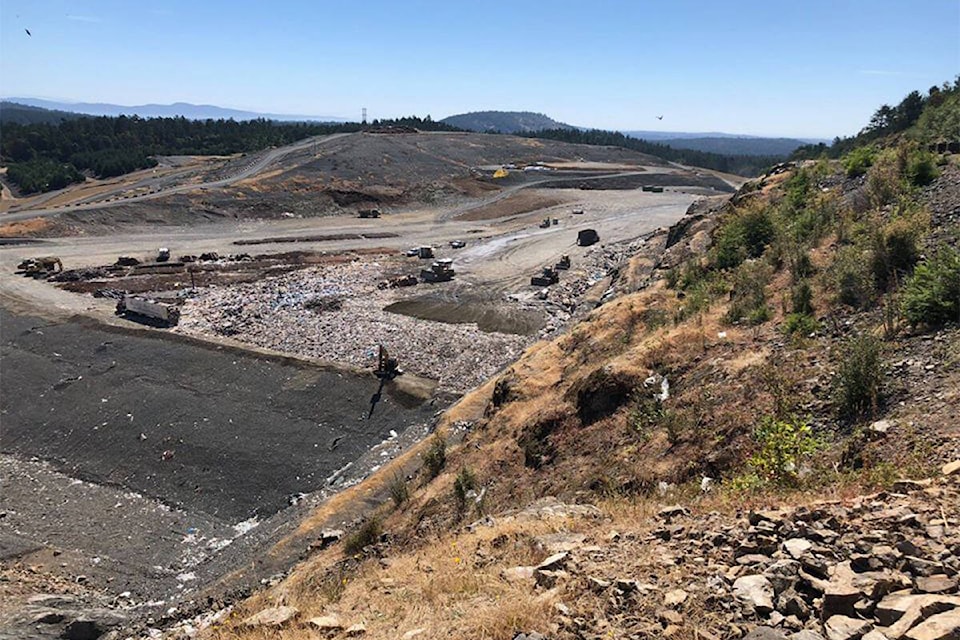The Capital Regional District expects to be piping out natural gas derived from Hartland landfill’s decomposing organic waste by next year.
Since 2004 a facility at the landfill has been capturing landfill gases such as methane and using them to produce electricity, enough to power about 1,600 homes.
However, the volume of gases produced by waste at the landfill is now exceeding the gas-to-electricity plant’s capacity and the facility itself is nearing its end of life.
That prompted the CRD to pursue capturing the biogas and processing it into renewable natural gas. A lifecycle assessment found decommissioning the electricity plant and building a new natural gas facility at Hartland would be a more beneficial use of the gases from a climate change perspective, according to the CRD’s annual solid waste report.
A supply contract with Fortis BC was approved by the B.C. Utilities Commission in 2021 and the facility is expected to be operational in 2023. While the CRD will still own and operate the landfill’s gas collection system, FortisBC will pay a fixed price per gigajoule for the natural gas and will be responsible for the costs of injecting it into the natural gas distribution system.
READ: Climate change causing high variability, shifting normals in CRD: report
The CRD said the project will reduce greenhouse gas emissions by roughly 264,000 tonnes of carbon, the equivalent of removing 2,240 cars from the road, over the next 25 years.
While utilizing biogas boasts a lower overall emission output, an increase in natural gas consumption and connections was one of the main factors causing CRD building emissions to rise between 2018 and 2020.
Shifting away from fossil fuel-powered space and water heating – the overwhelming driver of emissions from buildings – will be key to reaching GHG reduction targets, the CRD’s annual climate report stated.
Capital Region residents increased their per capita solid waste production for the fourth straight year in 2021. The 400 kilograms per capita figure represented a slight jump from 2020, but still came in under the provincial average of 500 kg per capita.
The region’s solid waste management plan, which was adopted last year, sets the target of minimizing waste and reaching 250 kg per capita by 2030.
READ: B.C. government to mandate items such as mattresses and EV batteries are recyclable by 2023
Do you have a story tip? Email: vnc.editorial@blackpress.ca. Follow us on Twitter and Instagram, and like us on Facebook.



